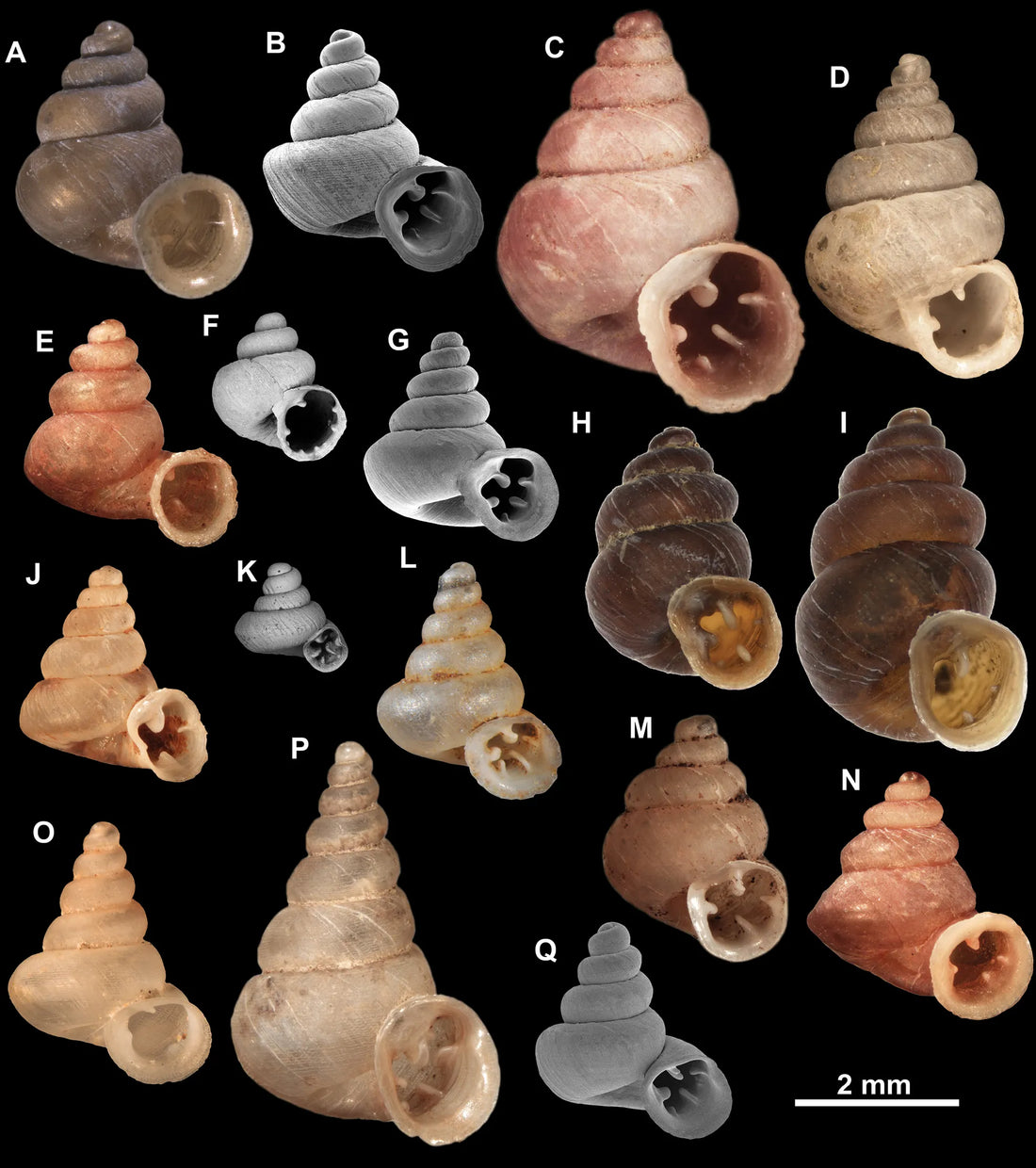
A Tiny Masterpiece of Nature - The Newly Discovered Snail Named After Picasso
Share
In an extraordinary blend of natural science and art, researchers have uncovered a tiny snail species so visually striking that it has been named Anauchen picasso, in tribute to the legendary Spanish artist Pablo Picasso. Discovered in Southeast Asia, this miniature terrestrial snail exhibits shell features that evoke Picasso's pioneering Cubist style—challenging perceptions of both biodiversity and natural art.

Discovery and Scientific Significance
An international team of malacologists, led by Serbian PhD student Vukašin Gojšina and his Hungarian advisor Barna Páll-Gergely, recently published a groundbreaking study describing 46 new species of microsnails from countries across Southeast Asia, including Cambodia, Myanmar, Laos, Thailand, and Vietnam. Among these, Anauchen picasso stands out for its unique shell morphology Pensoft Blog on Anauchen picasso.
Unlike typical snails with smoothly coiled, rounded shells, A. picasso features sharply angular, rectangular whorls. Its intricate shell structure resembles a "cubist interpretation" of more conventional snails, inspiring the researchers to honor Picasso, whose Cubist artworks famously deconstruct and reinterpret shapes and perspectives Science Daily.
Morphology: Nature’s Cubist Sculpture
Measuring only about 3 millimeters in shell width—roughly half the size of a grain of rice—Anauchen picasso packs extraordinary detail in its diminutive form. The shell’s angular whorls create a geometric silhouette evocative of Picasso's fragmented, abstract style of representation.
The snail’s shell aperture (opening) is armed with numerous tooth-like barriers which likely serve as defense mechanisms against predators. Some species discovered alongside A. picasso even carry their shells upside-down or have openings that turn upwards or downwards, increasing the diversity in these tiny creatures’ adaptations Phys.org.
Biodiversity Insights and Conservation Concerns
The discovery of such a unique snail highlights the vast, often undiscovered biodiversity of Southeast Asia. Many of these snails, including A. picasso, were collected during recent fieldwork and from historic museum collections dating back to the 1980s, some of which have been suffering habitat loss due to deforestation and limestone quarrying.
This research underlines the urgency of conserving fragile ecosystems that house these overlooked but ecologically important species Modern Sciences.
Why Name a Snail After Picasso?
Naming new species after cultural figures is a tradition that celebrates the intersection of science and humanitarian creativity. Just as Picasso transformed visual art by breaking traditional forms into geometric fragments, Anauchen picasso’s shell similarly breaks from the norm in the mollusk world. The name captures both aesthetic uniqueness and scientific curiosity.
Other species have also been named to honor artists, musicians, and cultural icons, symbolizing the shared creativity between nature and human art Forbes on Species Named After Artists.
Image Sources and Further Reading
-
Detailed species description and images: Pensoft Blog Tiny New Species of Snail Named After Picasso
-
Scientific publication on Southeast Asian microsnails: ZooKeys Journal via Science Daily Anauchen picasso Discovery
-
Biodiversity and conservation implications: Modern Sciences New Snail Species Report
Frequently Asked Questions (FAQ)
Q: What makes Anauchen picasso different from other snails?
A: Its sharply angular, rectangular shell whorls resemble Cubist art, unlike smooth, rounded shells typical in most snails.
Q: Where was Anauchen picasso discovered?
A: It was found in Southeast Asia, particularly in Thailand, as part of a broader discovery in Cambodia, Myanmar, Laos, Thailand, and Vietnam.
Q: Why is naming species after artists important?
A: It bridges science and culture, celebrating the creativity in both natural evolution and human artistic expression.
Q: What threats do these newly discovered snail species face?
A: Key threats include habitat loss due to deforestation and limestone quarrying in their native regions.
Q: How big is Anauchen picasso?
A: The shell is about 3 millimeters wide, making it a tiny but intricate microsnail.
The discovery of Anauchen picasso reveals nature’s own artistry, reminding us that beauty and complexity exist even in the smallest forms. As scientists uncover more about these miniature marvels, each new species tells a story not only of biological wonder but also of cultural inspiration rooted in global biodiversity.
